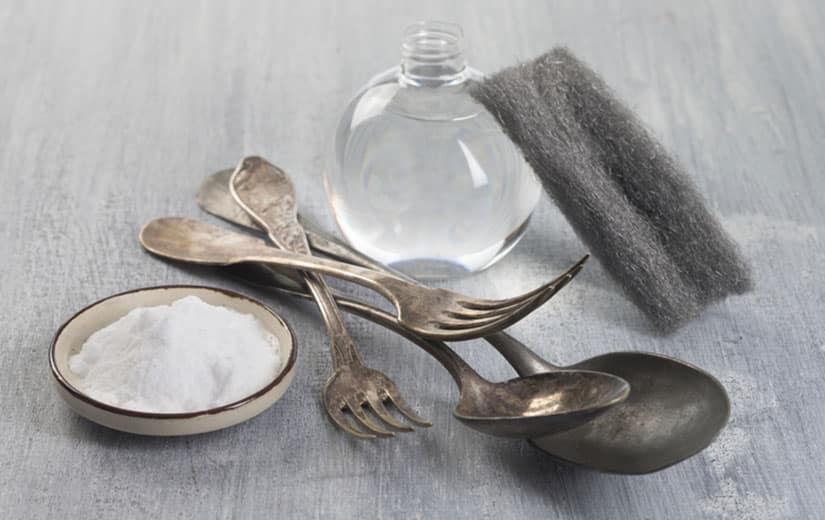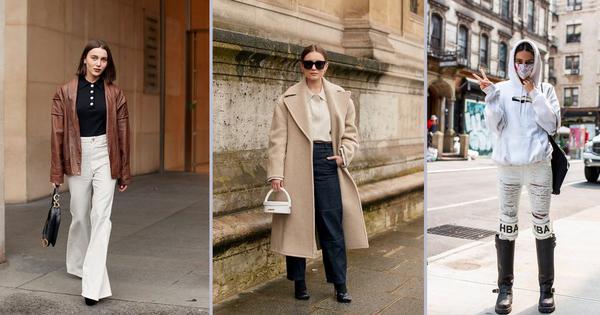
“It is with great sadness that Mr. Philippe Venet informs you of the death of Mr. Hubert Taffin de Givenchy, his companion and friend. Monsieur de Givenchy passed away in his sleep on Saturday March 10, 2018. His nephews and nieces and their children share his pain.” It is with these sober words that the disappearance of the aristocrat of couture was announced. The esthete, a great lover of art and botany, the man faithful to his friends, his dogs, his properties (which he decorated himself) is gone. The couturier had already bowed out. Without fanfare, without retrospective narcissism, but with panache. On July 11, 1995, under the paneling of the lounges of the Grand Hotel in Paris (which has since become the InterContinental), he closed his last parade with a tribute to his 80 workers in white linen blouses perched on the podium.
“ The eternal apprentice ” as he liked to describe himself, the workaholic who, for forty-three years ritually joined his workshops at 7 a.m., had warned: “ I will stop doing dresses but not to discover. Life is like a book. You have to know how to turn the pages. Modesty or sincerity? Hubert de Givenchy did not find his place in the new era, that of “industrial bulldozers”. Yet no bitterness in this man, a time reconverted at Christie's, in prestige auctions, who was jubilant to have exercised the most beautiful job in the world, in the good old days, the one " where the models were elegant, where the customers dressed, even to go to remote places. He just mentioned a regret for a long time, that of not having identified a disciple to whom to pass on his know-how.
A muse named Audrey Hepburn
The discreet bachelor, deprived of descendants, dreamed of a spiritual son in sewing. There is no doubt that he did not recognize himself in the sometimes outrageous style of the artistic directors successively recruited by LVMH to take over: John Galliano, Alexander McQueen, Julian Macdonald, Riccardo Tisci. Until Clare Waight Keller, appointed artistic director of the label in March 2017. The Briton made it a point of honor to meet the founding designer who, for the first time, had opened his heart to a successor. and had transmitted to him the fundamentals of his style. Last January's haute couture show turned out to be an unexpected tribute to the legacy of "Monsieur" as he is still called within the walls of Avenue George-V, to his powerful black, to his muse Audrey Hepburn.
In video, Givenchy and Audrey Hepburn: an haute couture friendship
The imprint of the founder, the Protestant aristocrat, lies in extreme elegance, due to surgical precision in the dosage of effects. Neither too much nor too little. Balenciaga, his master, pointed out to him: “Picking a flower, overloading with a detail, is not couture. But making a very simple dress where there is nothing but a line is high fashion. Hubert de Givenchy liberates the corseted woman of the post-war period with a very studied casualness, a fluidity in the slender silhouette. The necklines are bare, the backs bloused, the lines fall precisely on the light fabrics. The young couturier innovates by adding comfort to fashion. A pioneer of luxury ready-to-wear, he invented at Schiaparelli, where he officiated for four years, the famous "separate", a line of coordinated - blouse, skirt, jacket and pants -, which customers can accessorize according to their wishes. their mood.
Talent broke through from the couturier’s first collection in February 1952, detected by the discerning eye of Hélène Lazareff, the director of Elle, or that of Carmel Snow, high priestess of Harper’s Bazaar. An all-black-and-white show where the couturier's spicy friends evolve, including Bettina Graziani, who will give her first name to a piece destined to become cult, the Bettina blouse.

What makes success? “To friendship ”, would have replied Hubert de Givenchy. The trajectory of the sober provincial (from the former nobility of the North, this native of Beauvais had set up his perfume factory there) is intimately intertwined with that of Audrey Hepburn. It is she, the mischievous doe-eyed actress, who will perfectly embody the Givenchy style with exemplary fidelity. She, who will forge her notoriety in the United States where 70% of her clientele is then concentrated. Among the actress's memorable outfits, the black and white organdy dress embroidered with flowers from the film Sabrina by Billy Wilder or the cloqué silk sheath dress matched with a capeline and dark glasses in Diamonds on a Sofa. It is she again, the friend, the muse, who graciously lends her image to l'Interdit, one of Givenchy's very first fragrances.
From "Sabrina" to "Charade", Audrey Hepburn's style according to Hubert de Givenchy
A master, Balenciaga
Another decisive meeting, that of Cristobal Balenciaga. The disciple who dreamed of starting his career with the famous Spaniard came across his master by chance in New York in 1953. A deep esteem would bind the two designers. In turn, Balenciaga opened his fitting rooms to his protege, found him premises next to his in Paris, on avenue George-V, encouraged him to launch perfumes and even offered to recruit his workers. And when, in May 1968, he decided to close his fashion house, Cristobal Balenciaga recommended Givenchy to his good clients.
Ah, customers! Hubert de Givenchy devoted his entire career to these rich and famous women, with their delightful eccentricity, from the ways in which he drew his inspiration. More than the couturier, he is the confidant of these extravagant, the accomplice of chic evenings and sometimes even the adviser in decoration. He, this descendant who would have enjoyed himself as an architect, was renowned for his refined taste in furniture, of which he collected 18th century pieces such as those of the cabinetmaker Boulle, skilfully mixed with works of contemporary art. Her friends were named Hélène Rochas, the Duchess of Windsor, the Countess Bismarck, Beatriz Patino, Lauren Bacall or the billionaire Bunny Mellon, for whom a room in her mansion in Jonchet in Touraine was reserved. Women have counted a lot in the career of this handsome man, with a stature close to two meters, starting with his mother, a young widow who instilled elegance in him. It is this legendary distinction, cultivated from childhood, which halos the whole life of one of the last great names of the golden age of haute couture.
In recent years, the French couturier has been involved in various exhibitions devoted to his work. In October, on the occasion of the Hubert de Givenchy retrospective at the City of Fashion and Lace in Calais (62), he confided again, in our columns: "I never wanted a high-end house classic stitching. My dream was to create a big boutique, where women could dress with imagination and simplicity. Clothes that are easy to wear, even when travelling, made in lovely but inexpensive fabrics.” A manifesto that resonates so much with our times.
The first reactions of the House following the death of its founder
“The House of Givenchy pays tribute to its founder, Hubert de Givenchy, a key figure in the world of French haute couture, a symbol of Parisian elegance for more than half a century. Even today, his approach to fashion and his influence endure. From his first haute couture collection in 1952, Hubert de Givenchy defended the principle of separates. Two years later, he became the first designer to launch a luxury ready-to-wear line. He also revolutionized international fashion by creating timelessly elegant silhouettes for Audrey Hepburn, his friend and muse for over forty years. His work remains as relevant today as it was then. His departure leaves a great void within the House and the fashion world.”
Bernard Arnault, Chairman and CEO of the LVMH group, said: “I am deeply saddened by the death of Hubert de Givenchy. Among the creators who definitively established Paris, from the 1950s, at the top of world fashion, Hubert de Givenchy gave his couture house a special place. Both in prestigious long dresses and in daytime outfits, Hubert de Givenchy has combined two rare qualities: being innovative and timeless. I send my deepest condolences to his family and to all who knew him.”
Clare Waight Keller, artistic director of Givenchy
“I am deeply saddened to learn of the passing of a great man, an artist, whom I had the honor of meeting and which I have approached since my arrival at Givenchy. Hubert de Givenchy was not only one of the most influential personalities in the history of fashion, whose legacy continues to fuel creation today, but also one of the most elegant and charming men who either. The very definition, in my opinion, of a true gentleman who will remain in my thoughts forever. I send my deepest condolences to his loved ones.”







